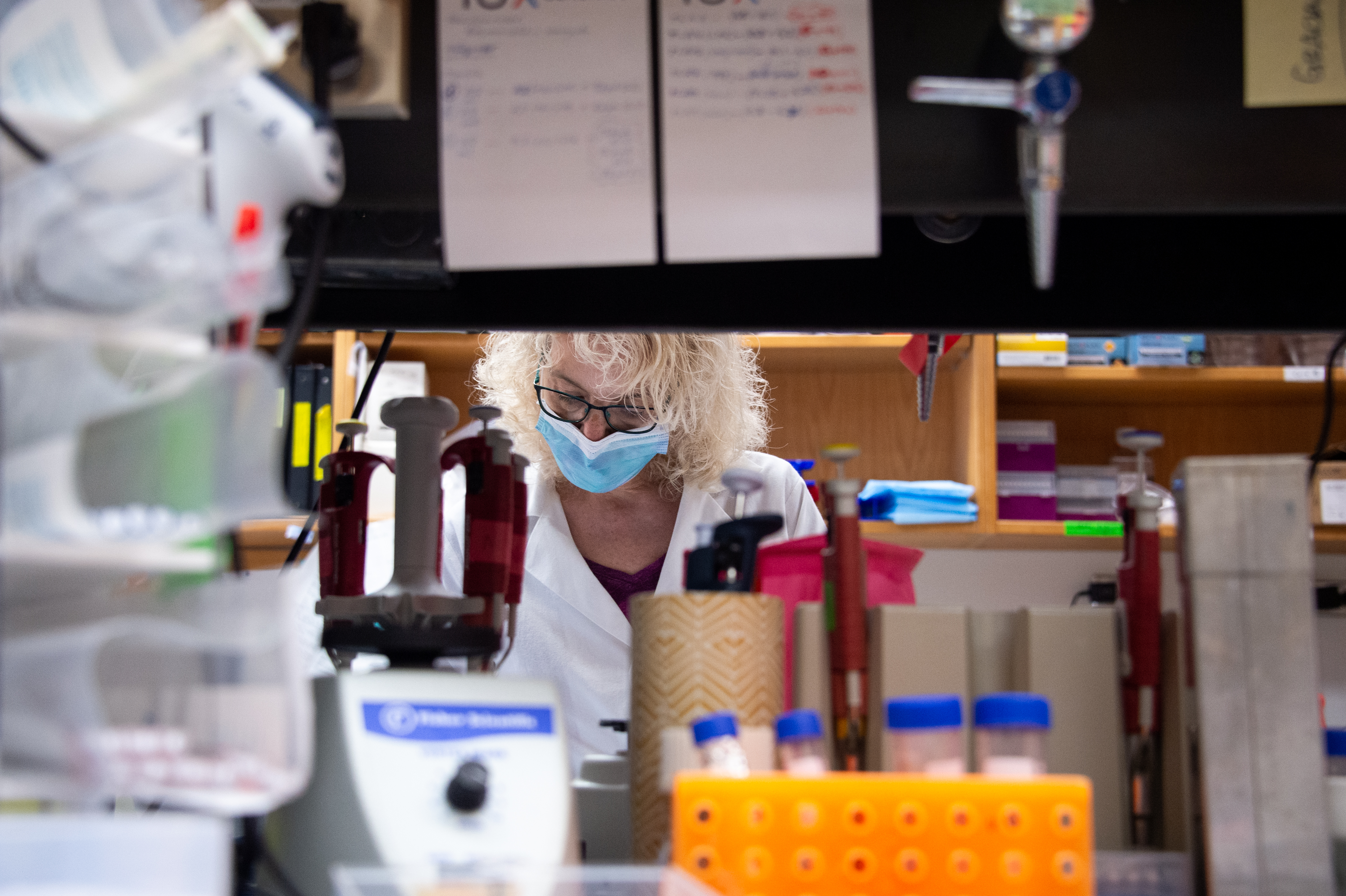BIRMINGHAM, Ala. – It is called PAGER-CoV, and it promises to be an important tool in finding therapies for COVID-19. Simply put, PAGER-CoV is a database packed with nearly 12,000 (so far) pieces of genetic information on the SARS-CoV-2 virus, information that researchers and physicians can use to tailor treatments against the disease.
PAGER-CoV is an extension of PAGER, a database of gene sets created by Jake Chen, Ph.D., professor in the Department of Genetics at the University of Alabama at Birmingham and associate director of the Informatics Institute in the UAB School of Medicine. Chen created PAGER some 10 years ago while he was at Indiana University. As the pandemic spread in early 2020, Chen and his UAB colleagues created a similar system, PAGER-CoV, in response.
The database includes 11,835 PAGs, which stands for pathways, annotated gene lists and gene signatures.
Pathways are the roadmap that describes how genes are turned on and off and how they establish connections with each other.
Annotated gene lists are empirical information that researchers collect from experiments or literature. Gene lists help researchers understand how a certain cell type behaves under different conditions.
A gene signature is a unique pattern of gene expression within a cell from a single or group of genes, providing information about the activity of those genes in the cell.
“SARS-CoV-2 is a new virus, and we didn’t know much about its function back in the summer of 2020,” Chen said. “The goal here is to gather all this information together in a searchable database so that researchers can gain a better understanding of how the virus’s genes behave or perform under various biophysical conditions, such as severe COVID-19 or long-haul COVID-19 patients.”
Chen says SARS-CoV-2 has 15 genes, with scant information on how these genes affect human cells.
“We need to understand the differences in people who die from COVID-19 versus the person who only has a mild case of the disease,” he said. “This is a precision medicine approach, employing the database to organize all that we’ve learned about the virus so that the information can be used in an effective way.”
Chen says the downstream effects of coronavirus are not well understood. Better understanding could lead to tailored therapeutics based on gene behavior.
“We need to know how the virus proteins are interacting with human cells, and we need to know what we can do about it,” he said. “There is no shortage of possible therapeutics. There is a shortage of regimens that will pair the right therapeutic with the right person. Precision data-driven medicine is what this work will help COVID-19 physicians understand.”
Chen and colleagues’ paper on the workings of PAGER-CoV was published in January in Nucleic Acids Research. The team searched the medical literature for all articles dealing with the SARS-CoV-2 virus. They then employed data science tools to do comprehensive data processing and data integration. Super computers were used to establish quality measures and develop PAG-to-PAG relationships.
Chen says users can search the database with any human gene or a PAG of interest, drill down to their database entry, and navigate to other related PAGs through either shared PAG-to-PAG co-membership relationships or PAG-to-PAG regulatory relationships. To date, there are 19,996,993 PAG-to-PAG relationships stored in the database.
“Our intent is to provide a resource that researchers doing functional genomic studies of COVID-19 will use,” Chen said. “There is a lot of information here, organized in a way that we hope will spur new insights and lead to meaningful results.”
PAGER-CoV will grow as new information is available and added to the database. Chen urges researchers worldwide to make use of the portal and participate in this community-based knowledge curation effort.
PAGER-CoV is freely available to the public without registration or login requirements (http://discovery.informatics.uab.edu/PAGER-CoV/). The data is available for download based on the agreement of citing this work while using the data from PAGER-CoV website.
Joint first authors on the paper are Zongliang Yue, Ph.D., and Eric Zhang. Additional co-authors are Clark Xu, Sunny Khurana, Nishant Batra, Son Do Hai Dang and James J. Cimino, Ph.D.
PAGER-CoV was developed with support from the University of Alabama at Birmingham Informatics Institute, UAB Academic Enrichment Fund, the UAB Center for Clinical and Translational Science, National Cancer Institute, and the National Center for Advancing Translational Sciences of the National Institutes of Health.
About UAB
Known for its innovative and interdisciplinary approach to education at both the graduate and undergraduate levels, the University of Alabama at Birmingham, a part of the University of Alabama System, is an internationally renowned research university and academic medical center with over $600 million in research awards annually, as well as Alabama’s largest employer, with some 23,000 employees, and has an annual economic impact exceeding $7 billion on the state. The pillars of UAB’s mission include education, research, innovation and economic development, community engagement, and patient care. Learn more at www.uab.edu.
EDITOR’S NOTE: The University of Alabama at Birmingham is one of three doctoral research universities in the University of Alabama System. In your first reference to our institution, please use University of Alabama at Birmingham and UAB on subsequent references.
VIDEO: www.youtube.com/uabnews TEXT: www.uab.edu/news TWEETS: www.twitter.com/uabnews
